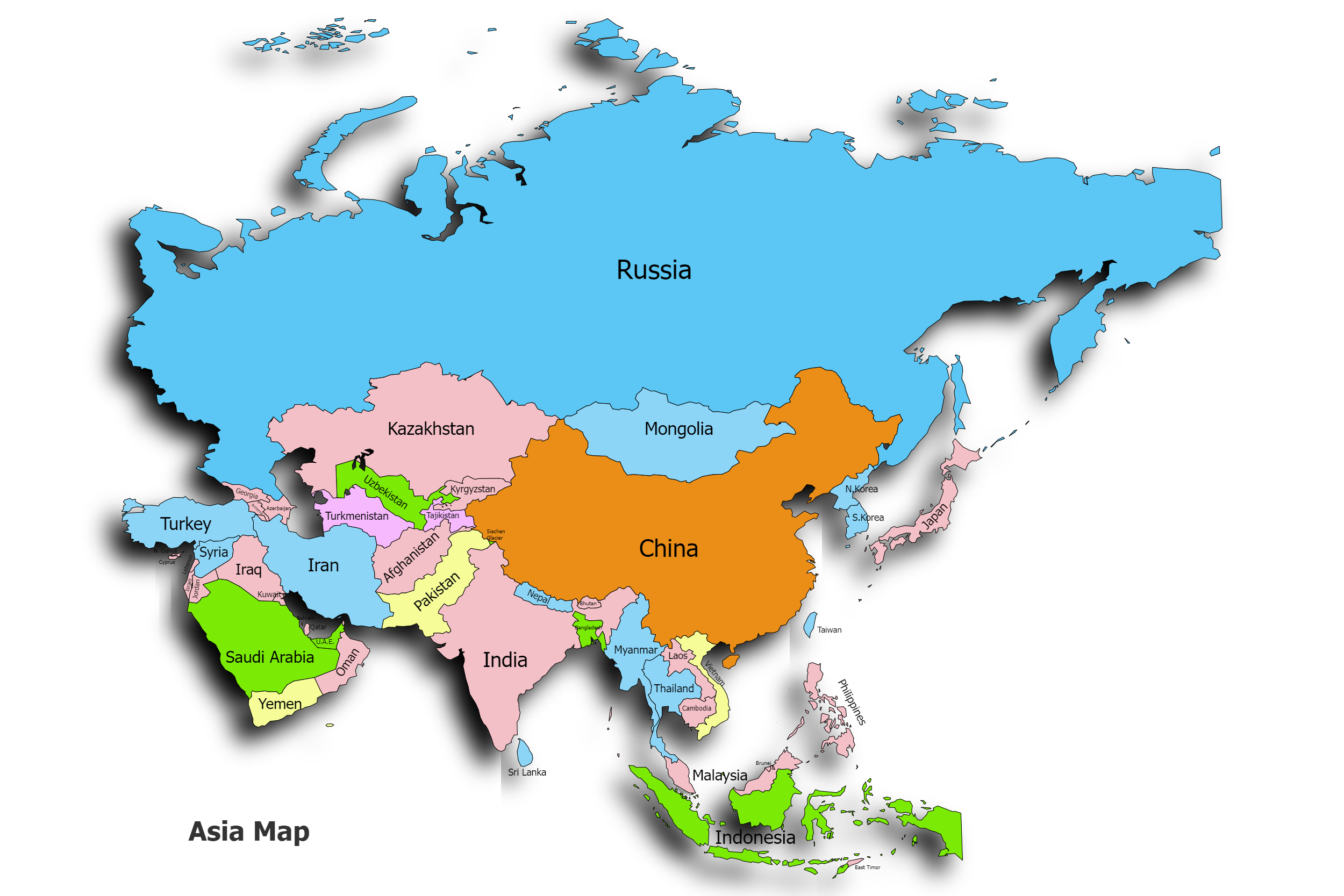Asian Continent
A brief about asian continent

About Asia
Asia is the biggest and most crowded continent on our planet. Stretching from the Pacific Ocean to the Mediterranean Sea, Asia occupies the eastern portion of the Eurasian landmass. It's a place of many different cultures, landscapes, and histories, with ancient traditions mixing with new ideas.
With over 4.6 billion people living in 49 countries, Asia is full of energy and diversity. From the huge mountains of the Himalayas to the busy cities like Tokyo and Mumbai, Asia is a mix of amazing natural sights and bustling city life.
Asia covers an area of approximately 44.58 million square kilometers which is about 30% of the world's total land area and approximately 8.7% of the Earth's surface. The population of Asia is approximately 4.6 billion people, which is about 60% of the world's total population.
Countries and Land Area
Asia's landmass is separated from Africa and Europe primarily by natural geographic features such as bodies of water and mountain ranges. The Red Sea, Gulf of Aden, and Arabian Sea make a border between Asia and Africa. The Ural Mountains and Ural River make a border between Asia and Europe. There are also the Caspian Sea and Caucasus Mountains that make a border between them too.
Asia stretches from the Arctic Ocean in the north to the Indian Ocean in the south, and from the Pacific Ocean in the east to the Mediterranean Sea in the west. Natural features like the Ural Mountains and River separate Asia from Europe, while the Red Sea and Indian Ocean separate it from Africa.
Countries spanning across Europe and Asia are known as Eurasian countries. These countries include Russia, Kazakhstan, Azerbaijan, Georgia, Turkey, and Cyprus, among others. They often have cultural, historical, and geographical ties to both Europe and Asia.
The largest country in Asia by land area is Russia. Spanning two continents, Europe and Asia, Russia covers an expansive territory of approximately 17.1 million square kilometers.
The smallest country in Asia by land area is the Maldives. Located in the Indian Ocean, the Maldives is an archipelago comprising 26 atolls, which collectively cover an area of approximately 298 square kilometers. Despite its small size, the Maldives is known for its stunning beaches, turquoise waters, and vibrant marine life, making it a popular tourist destination.
Regions
There are six main geographical regions or subregions in Asia.
- East Asia
- Southeast Asia
- South Asia
- Central Asia
- West Asia
- South Caucasus
Languages
Asia has many different languages, with over 2,300 spoken across the continent. These languages come from different language families like Indo-European, Sino-Tibetan, and others. Popular languages in Asia include Mandarin Chinese, Hindi, Bengali, Arabic, and Russian. Besides these, there are also many smaller languages spoken by indigenous and minority groups, showing how diverse Asia's languages are.
History and culture
Asian history, culture, and civilizations are rich and diverse, spanning thousands of years. There were ancient cities and cultures in places like Mesopotamia, the Indus Valley, and China. Religions like Buddhism, Hinduism, Islam, and Christianity have been very important here. Asian culture is known for valuing family, community, and respecting older people. There were big empires like the Mongols, Ottomans, and Mughals that ruled over many places. They changed a lot of things in history.
Landscapes
Asia has many different landscapes and famous places to see. There are big mountains, like the Himalayas where Mount Everest is. People love to climb these mountains or go hiking. Asia also has beautiful beaches and islands. Countries like the Maldives, Thailand, and the Philippines have clear blue waters and sandy beaches that are great for swimming and relaxing.
There are also many cultural landmarks and historic sites in Asia. For example, in China, there's the Great Wall, which is very old and very long. In India, there's the Taj Mahal, a beautiful white marble building.
- Read More:
- About Asia |
- Facts